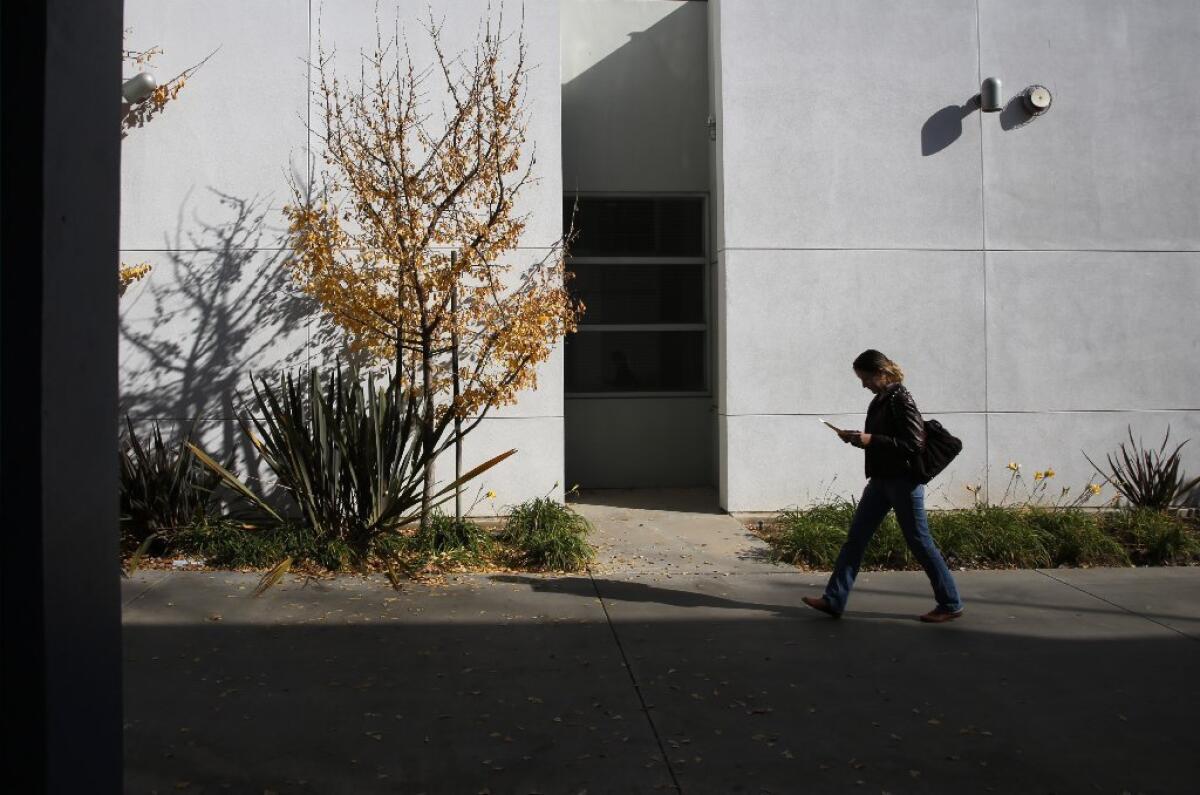Opinion: Obama’s free community college plan would give California less than other states

A close-up look at President Obama’s proposal for free community college for most students reveals some aspects that might not thrill Californians.
Unlike the way things work for most of education, the president’s plan would provide uneven funding levels to states. Rather than provide a particular amount per student, he would give each state 75% of each student’s tuition (not how much it costs to provide the education, but how much each state charges in fees) up to about $2,500, with states picking up the rest. With this formula, California, which has kept the cost of tuition low, ends up a relative loser. Full-time fees here are generally about $1,600 a year. New Mexico is the only state that even comes close to this. Thirty-seven states charge more than twice what California does. (For a state-by-state rundown of college fees, check out this chart by the College Board.)
How does this work? Let’s compare California with Hawaii, the state where the president was born, which charges about $3,400 per student.
Under the proposal, Hawaii would receive close to $2,500 per student. If California is given 75% of its tuition, that amounts to $1,200 per student. The White House has indicated that the president understands the problem with these discrepancies, so he is likely to be more generous, giving California more than 75%, though it would still have to contribute some percentages.
But let’s just say federal dollars would pick up the whole thing for California. That would be about $1,600 being paid for each Californian; Hawaii would still receive more than 50% more money per student.
Everyone is frozen in time. California runs a fairly austere community college program and keeps tuition low and subsidies high. But by charging students more money, other states might have far more robust programs. They get to keep those programs, funded mostly by the federal government, while California can’t really hope to match them without spending a whole lot more money on its own.
It’s not the way other federal education dollars are spent. Title I money for low-income students is even. Pell grants are based on financial need, not on how much states spend on higher education.
Look at it this way: It’s as if you were being water-thrifty, installing rain barrels for outside watering and keeping showers to a minute, while your next-door neighbor had the sprinklers going at every available moment, running water down the streets. (Yes, not legally, but it happens all the time.) Then water rationing is instituted — all households can use half as much as they did before. Your extremely low new ration is based on your having done the right thing all along; their more generous allocation is based on their having been more profligate.
It’s not as though California would lose money. It would — or at least might — be able to spend less money on community colleges. (It might not be able to, but I’ll write about that in a later blog post. Then of course there are questions about how much Californians might pay in federal taxes to support the new program; the funding source for it hasn’t been revealed yet.) Or use the extra money to beef up community college programs, though it would get nowhere near the funding that other states have.
In other words, the federal money is a gift to any state, although some states are treated like favored siblings, getting shiny new bikes instead of socks.
Follow the Opinion section on Twitter @latimesopinion
More to Read
Start your day right
Sign up for Essential California for news, features and recommendations from the L.A. Times and beyond in your inbox six days a week.
You may occasionally receive promotional content from the Los Angeles Times.







